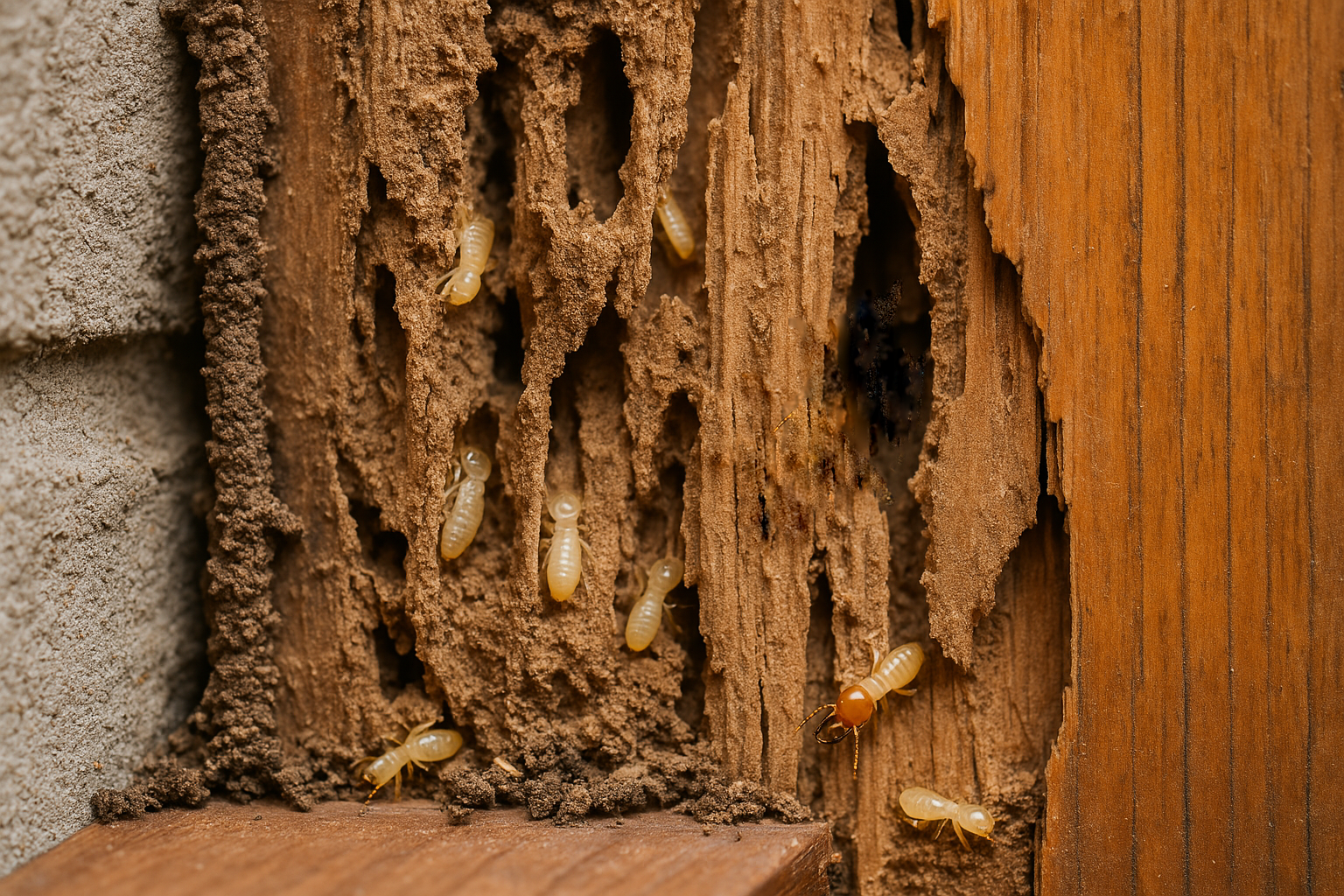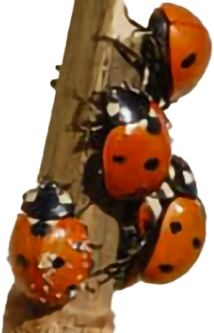
If you’ve ever noticed large, sluggish flies gathering on your sunny windows in the fall or mysteriously emerging in your home during early spring, you’re likely dealing with cluster flies. Unlike the common house fly, cluster flies don’t breed indoors or seek out your food—they’re overwintering pests that sneak into attics, wall voids, and crawlspaces as temperatures drop. Once inside, they cluster together (hence the name) in secluded areas to ride out the winter. When the weather warms, they reappear, creating a nuisance as they try to escape.
In Minnesota, the presence of cluster flies is especially noticeable during late summer through early fall, when they begin searching for warm overwintering sites.
That’s where Adam’s Pest Control comes in. With more than 50 years of experience controlling seasonal pests across Minnesota, Adam’s understands not just the behavior of cluster flies—but the timing and tactics needed to keep them out. Our experts are trained to identify vulnerable entry points and apply EPA-registered treatments at just the right time—before an infestation occurs.
By scheduling a preventive exterior treatment in late August or early September, you can significantly reduce the chance of cluster flies entering your home or business. It’s safer, more effective, and far less stressful than trying to manage an infestation once flies are already buzzing around indoors.
Let’s explore what you need to know to stop cluster flies before they settle in for the winter.
What Are Cluster Flies?

Cluster flies (Pollenia rudis) are a common overwintering pest in Minnesota, especially in older or less tightly sealed buildings. Though often mistaken for common house flies, cluster flies are a distinct species with noticeable differences in behavior and appearance.
Appearance & Behavior
Cluster flies are about 3/8 to 1/2 inch long, slightly larger than house flies. They have dark gray bodies covered with golden or yellowish hairs on the thorax, giving them a somewhat bristly or fuzzy appearance. Their wings overlap at rest, and they fly more slowly and sluggishly than other flies—particularly when disturbed indoors in cooler temperatures.
Unlike house flies, cluster flies do not breed inside homes or garbage. Instead, they develop outdoors as parasites of earthworms. The larvae feed on earthworms in soil, and adult flies emerge in late summer and early fall to seek shelter for the winter.
Once they find a suitable building—often a sunlit wall, attic, or wall void—they squeeze in through tiny cracks, gaps around windows or siding, or vents. Inside, they enter a dormant state until warmer temperatures in spring “wake them up,” prompting them to head toward light sources such as windows.
Why They’re a Problem
While cluster flies are not harmful to humans, pets, or property, they are a major nuisance:
- Large numbers can accumulate behind walls, in attics, and around windows
- When disturbed, they buzz loudly and fly erratically, startling occupants
- Dead flies may attract other pests, like carpet beetles, that feed on insect carcasses
- Accumulated flies can leave stains on walls or curtains and unpleasant odors
- In commercial settings, visible flies can create unfavorable impressions for customers or tenants
Because they overwinter silently and out of sight, you might not even know cluster flies have invaded—until they begin emerging in the spring or after a warm spell in winter.
Understanding what they are—and more importantly, how and when they get inside—is the first step to preventing a full-blown infestation. And as we’ll explore next, early intervention can make all the difference.
How to Prevent Cluster Flies: Exclusion & Sanitation Tips
The best way to stop cluster flies from becoming a problem is to prevent them from entering your home or building in the first place. Because cluster flies don’t reproduce indoors, effective exclusion and sanitation measures can dramatically reduce their numbers year after year—especially when combined with a professionally timed treatment.
Here are key steps Minnesotans can take to block cluster fly entry and minimize attraction:
🏠 Seal Cracks and Gaps in the Exterior
Cluster flies typically enter buildings in late summer and early fall, targeting structures warmed by the sun—especially the south- and southwest-facing sides. That makes sealing gaps on these exposures a top priority.
- Inspect for cracks and openings around windows, doors, siding, utility lines, roof edges, chimneys, and soffits.
- Use high-quality caulk or weather-resistant sealant to close gaps where flies can enter.
- Pay special attention to older homes and outbuildings, which often have more unsealed gaps.
Tip: A fall home inspection, especially in late August or early September, can catch problems before peak fly migration begins.
🧰 Install or Repair Screens and Vents
Cluster flies often find their way in through unscreened attic vents or gaps around roofline ventilation points. To reduce access:
- Install tight-fitting, fine-mesh screens (at least 16-mesh) on all foundation, attic, and soffit vents.
- Replace torn or warped window screens, and ensure they seal snugly in their frames.
- Don’t overlook dryer vents, exhaust fans, and gaps in fascia that could offer a hidden entry point.
These simple upgrades can block not only flies but other fall invaders like boxelder bugs, Asian lady beetles, and spiders.
🌿 Keep the Foundation Area Clean and Dry
While adult cluster flies breed outdoors in soil rich in earthworms, certain yard conditions can increase their activity around your home. Good sanitation practices include:
- Move compost piles and mulch away from the foundation.
- Remove decaying vegetation or leaf litter, especially in shady areas near the house.
- Keep grass trimmed and avoid overwatering lawns, which can make the soil more attractive to earthworms and moisture-loving pests.
- Ensure gutters and downspouts direct water away from the home to avoid excess ground moisture near walls.
While you can’t eliminate earthworms (nor should you), minimizing favorable outdoor conditions can make your home less attractive to cluster flies seeking winter shelter.
Preventive measures work best when implemented before flies arrive—ideally by late summer. But even if cluster flies have already appeared, Adam’s Pest Control can help eliminate them safely and prevent them from coming back next year.
Why DIY Methods May Fall Short
When cluster flies begin emerging around windows or sluggishly flying indoors, many homeowners reach for fly swatters or over-the-counter sprays. While these stopgap measures may offer temporary relief, they don’t address the root of the problem — and in some cases, can actually make things worse.
🚫 Swatting & Vacuuming Only Address What You See
You might be able to vacuum or swat a handful of cluster flies on a sunny winter day—but chances are, hundreds more are hidden in wall voids, attics, and ceiling spaces, waiting to emerge. These flies don’t breed indoors, but once they’ve entered in fall, they settle deep into secluded areas to overwinter in clusters.
DIY methods can’t reach the true infestation zones behind the drywall or above drop ceilings. By the time flies become visible, it’s already too late for simple fixes.
🧪 Store-Bought Sprays & Foggers Don’t Solve the Problem
Many homeowners try aerosol insecticides or foggers indoors once flies appear. Unfortunately, most retail products offer only short-term knockdown and no residual protection. Even worse:
- Dead cluster flies can attract secondary pests, such as dermestid beetles, that feed on insect carcasses and may then damage stored fabrics or pantry goods.
- Foggers and contact sprays often fail to penetrate wall voids and eaves where the majority of flies are hiding.
- Improper use of insecticides indoors can pose health risks to people and pets, especially in poorly ventilated areas.
The end result? A few dead flies… followed by more in a few days.
🏚️ Treating from the Inside Is Too Little, Too Late
Once cluster flies are indoors, the most effective strategy is prevention—not indoor eradication. Trying to treat infestations from inside a structure is almost always less effective, more disruptive, and more frustrating than dealing with the root cause from the outside before they enter.
Some people wonder whether they can prevent cluster flies by controlling earthworms in their yard (since larvae feed on worms). But this approach is both unnecessary and impractical:
- There’s no direct link between earthworm numbers and cluster fly presence. Cluster flies can travel far and are attracted to sunlight and building orientation—not just earthworms in your yard.
- The real solution lies in exclusion and targeted exterior treatments before the flies get inside.
For lasting control, it’s best to work with a licensed pest control professional who understands where and when to apply treatments for maximum effectiveness—something no can of spray or fogger can offer. Adam’s Pest Control technicians are trained to anticipate cluster fly activity in Minnesota’s climate and stop them before they invade.
Why Trust a Licensed Pest Control Professional?

When it comes to controlling cluster flies, success depends on timing, technique, and product knowledge—all of which are built into every Adam’s Pest Control service. While DIY products might provide a quick fix, only a certified professional can deliver lasting results without compromising your health or your home.
✅ Local Expertise Matters
Cluster fly control in Minnesota requires precise timing. Apply treatments too early, and the product may degrade before flies begin to enter. Too late, and they’re already inside. Adam’s trained technicians know exactly when and where to apply treatments based on decades of experience with Minnesota’s climate and pest behavior.
We use EPA-registered residual insecticides that are specifically labeled for cluster fly control. Our licensed technicians follow all label instructions and state regulations to ensure treatments are both effective and minimize risks for your family, pets, and the environment.
🏡 Exterior Treatments
Many homeowners try interior sprays or foggers that only knock down a few visible flies—and often leave behind stains, odors, or chemical residue. Adam’s approach is different. We focus on exterior treatments that stop flies before they ever get inside, targeting:
- Foundation cracks
- Eaves and soffits
- Window and door frames
- South and west-facing walls where flies are most likely to congregate
This preventive approach keeps your indoor environment free of unnecessary chemical exposure, while providing far more reliable long-term control.
🛡️ Guaranteed Results with Industry-Leading Warranties
One of the greatest benefits of working with Adam’s Pest Control is peace of mind. Our services are backed by written warranties, including:
- 3-month or 12-month coverage, depending on the program
- Free follow-up treatments if cluster flies return within the warranty period
- No added cost, no fine print—just results you can trust
We stand behind our work because we know it works.
When you partner with Adam’s, you’re not just getting a treatment—you’re getting a trusted advisor with more than 50 years of pest management experience in Minnesota. Let us take the guesswork (and the flies) out of your fall and spring seasons.
Take Action Before Cluster Flies Invade
Don’t wait until cluster flies are buzzing around your windows or hiding in your attic. The key to effective control is early, proactive prevention—and no one knows how to protect Minnesota homes and businesses like Adam’s Pest Control.
With over 50 years of experience, licensed technicians, and guaranteed results, Adam’s provides targeted, exterior treatments that stop cluster flies before they get inside—without the mess or guesswork of DIY.
✅ Timed treatments based on Minnesota’s seasonal patterns
✅ EPA-registered products applied by trained professionals
✅ Warrantied services with free follow-up if flies return
Schedule your fall cluster fly prevention service today. Call Adam’s Pest Control or request a free estimate online—and rest easy knowing you’ve stopped the problem before it starts.
📅 Don’t delay—late August to early September is the ideal treatment window!



